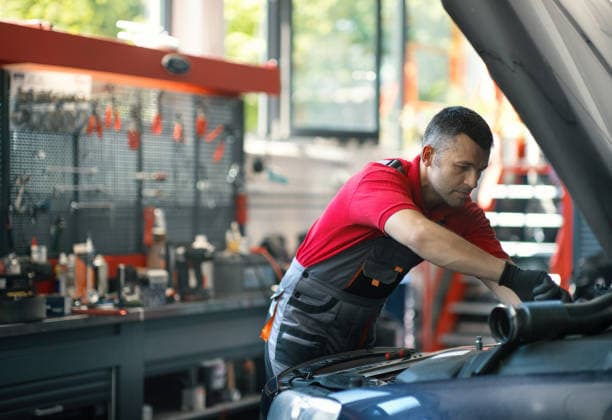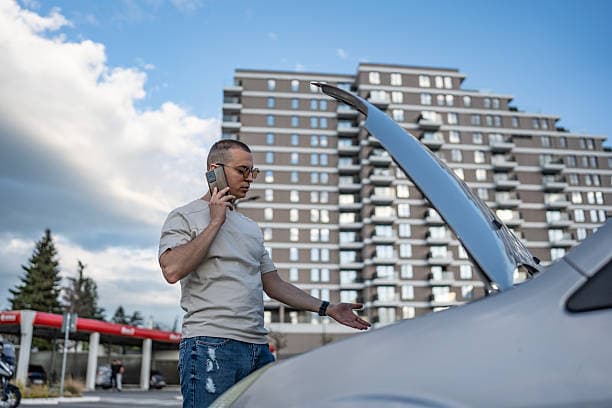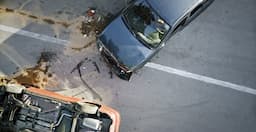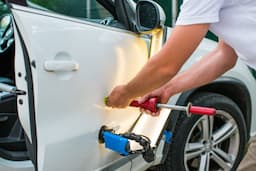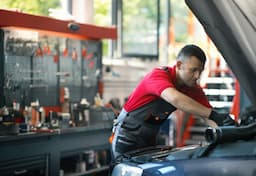Getting into an accident can be a stressful experience, and dealing with the aftermath can be overwhelming. From assessing the damage to working with insurance companies and getting your vehicle repaired, the process can seem complicated. However, understanding the collision repair process can help ease your worries and ensure that your car is restored to its pre-accident condition. This guide will walk you through what to expect when taking your vehicle to an auto body shop for collision repairs.
1. Assessing the Damage
The first step in the collision repair process is assessing the damage to your vehicle. This involves a thorough inspection to determine the extent of the repairs needed.
What Happens During the Assessment?
- The technician examines both visible and hidden damage.
- Photos and documentation are taken for insurance purposes.
- A detailed estimate is prepared, outlining the cost of repairs.
- If your vehicle is not drivable, towing services may be arranged.
2. Working with Your Insurance Company
Most auto body shops work directly with insurance companies to streamline the claims process. Once the damage has been assessed, you’ll need to file a claim with your insurer.
Insurance Process:
- Submit an accident report and repair estimate to your insurer.
- Your insurance company may send an adjuster to inspect the vehicle.
- The adjuster and the repair shop finalize the repair cost.
- Depending on your policy, you may need to pay a deductible before repairs begin.
3. Disassembly and Parts Ordering
Once the insurance company approves the repairs, the repair shop will begin disassembling damaged parts to identify any hidden issues. This is a crucial step, as some damages may not be immediately visible.
What to Expect:
- Additional damage may be found, requiring supplemental approval from the insurance company.
- New replacement parts are ordered, which may take time to arrive.
- If original equipment manufacturer (OEM) parts are unavailable, aftermarket or used parts may be considered.
4. Structural and Body Repairs
Once all parts are available, the actual repair process begins. This step focuses on restoring the vehicle’s structural integrity and appearance.
Key Repairs:
- Frame straightening (if necessary) to ensure the vehicle aligns properly.
- Dent repair and panel replacement.
- Welding and securing damaged sections.
5. Painting and Refinishing
After structural repairs, the next step is repainting and refinishing the vehicle. A professional paint job ensures that the car looks as good as new.
Painting Process:
- The repaired areas are sanded and prepped.
- A primer is applied to create a smooth base.
- Color-matching technology ensures the new paint matches the original.
- Multiple layers of paint and clear coat are applied for durability.
- The vehicle is dried and polished for a seamless finish.
6. Reassembly and Quality Control
After painting, the final steps involve reassembling the vehicle and conducting a thorough quality control inspection.
Final Touches:
- Lights, bumpers, mirrors, and other components are reinstalled.
- The vehicle undergoes a final check to ensure all repairs meet safety standards.
- A road test may be conducted to verify performance.
7. Cleaning and Final Inspection
Before returning your car, most auto body shops will perform a final cleaning and inspection to ensure everything is in top shape.
Final Steps:
- Interior and exterior cleaning to remove dust and debris.
- Final inspection by technicians to confirm quality.
- Customer walkthrough to review repairs and address any concerns.
8. Picking Up Your Vehicle
Once the repairs are complete, you’ll be notified that your car is ready for pickup. Some shops offer a warranty on their work, providing peace of mind that the repairs will last.
What to Do Before Driving Off:
- Inspect the vehicle to ensure you are satisfied with the repairs.
- Ask about warranty coverage on parts and labor.
- Keep copies of repair documents for future reference.
Conclusion
Understanding the collision repair process can make the experience less stressful and more manageable. By knowing what to expect—from damage assessment to final inspection—you can ensure a smooth and efficient repair process. Choosing a reputable auto body shop like Sea Side Auto Body Shop can provide high-quality repairs and excellent customer service, getting you back on the road safely and confidently.

